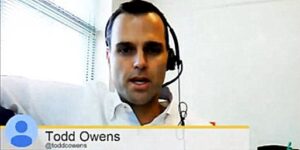
Talent Assessment: How AI Opens Careers to Young People
In an era defined by rapidly evolving technologies and industries, young people face a daunting task. How can they find the best job opportunities in

In an era defined by rapidly evolving technologies and industries, young people face a daunting task. How can they find the best job opportunities in

In the fast-paced realm of modern work, where remote and hybrid setups reign supreme, the intricacies of collaboration have taken on a whole new meaning.

Many managers and HR practitioners are familiar with 360 feedback as a leadership development practice. However, no two 360 feedback experiences look alike. That is
It can be difficult to hire for entry-level and mid-level positions because candidates may not have a long list of former employers or jobs that

How do you know if a candidate is really ready to take on a job? Testing may be the fastest path to a reliable answer.

How can your company do a better job of making hiring choices in today’s competitive marketplace? Let’s talk at #TChat Events

We know that mobile tools are rapidly transforming recruitment. But what about the rest of the hiring process? #TChat talks about why employers need to get ahead of the curve

Mobile recruiting is on the rise. What about mobile hiring? The TalentCulture community talks with HR technology experts
Are assessments the key to hiring the best talent and retaining your best people? Good question. It’s not easy to answer, but the TalentCulture community is uniquely qualified to examine the pros and cons…
“In the fields I have studied, emotional intelligence is much more powerful than IQ in determining who emerges as a leader. IQ is a threshold
#TChat Recap: Assessments as an employee acquisition and retention tool. Are we using them broadly, and for what purposes? A pre-Thanksgiving feast of opinions and ideas…